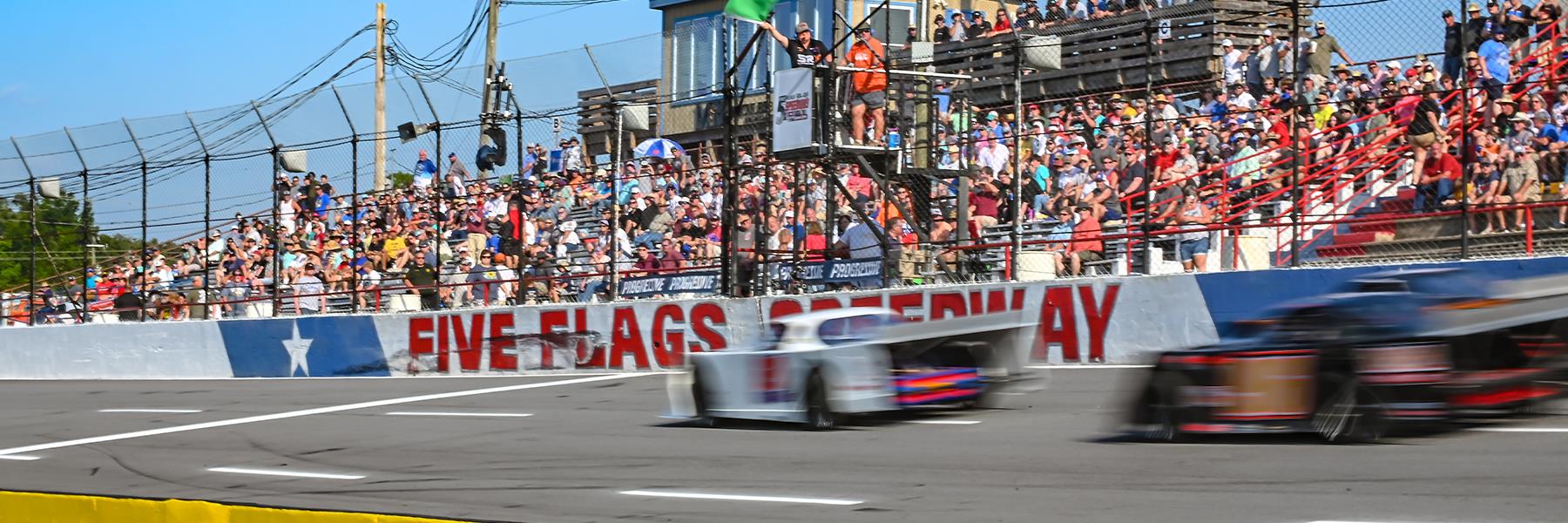
12/1/2011
Five Flags Speedway
Driving force behind the physics of auto racing
Written by
Will Isern
PNJ
In auto racing, physics is everything.
The science dictates car and track design, racing strategy, even tire selection. During the course of a race, drivers have to contend with all sorts of forces exerted on their bodies as they maneuver behind, beside and, hopefully, in front of other drivers.
A study conducted by the University of West Florida Society of Physics Students, in conjunction with the News Journal and Pensacola racer Johanna Long's Panhandle Motorsports team, has shed light on the complexities of a sport that, to many, may seem like one long left turn.
The study consisted of mounting three gravitational force monitors inside Long's super late model race car as she and her team practiced at Five Flags Speedway for the upcoming 44th annual Snowball Derby
Long, "Jo" to her fans, just 19, races in both super late model and NASCAR Camping World Trucks series races and won last year's Derby at the historic half-mile banked track.
As her orange and black No. 20 car rounded the track at speeds exceeding 100 mph, monitors mounted on X, Y and Z axes measured the gravitational forces, or G-forces, that resulted from the high-speed driving.
Mentioning G-forces, commonly called Gs, along the Panhandle is likely to conjure up the high-flying aerobatics of the Blue Angels in most minds.
In scientific terms, 1 G is equal to 9.8 Newtons, a measure of force, per kilogram of mass. Bill Caplinger, lab manager for UWF's School of Science and Engineering, describes the physical manifestation of G-forces on the body like exponential increases in weight.
While stationary, we all experience 1 G on a daily basis. It's what gives us the feeling of weight. As G-forces increase, we feel a corresponding increase in weight. For example, at 2 Gs, a man who normally weighs 180 pounds would register 360 pounds standing on a scale.
While racers may not have to wrestle with the blackout-causing force of a 6 G climb into the sun like Blues pilots might, they do experience forces that would give most of us 1 G'ers a hard time keeping between the white lines on the interstate.
Rounding the track at roughly 115 mph, Long consistently registered 2 Gs on the X axis while in the straightaways, resulting in a feeling of being pushed back into her seat at twice her weight. In the turns, where G-forces are at their most significant, Long topped out at 3 Gs on the X axis and 4 Gs on the Y axis, the axis of forces exerted left and right.
However, as Tim Clark explains, what Long felt was actually opposite of the forces being exerted.
"The driver's body is going to want to continue going in a straight line, so since the car is exerting force to the left, her body is going to be exerting an equal but opposite force to the right, and it's the force that your body is exerting that you actually feel," the senior physics major said.
Of course, in the real world, we don't feel each force separately. We experience a sum-total all of the forces in the varying directions they're exerted. Net force calculations conducted by Nicole Bobbitt, another member of the UWF physics team, indicate peaks in the range of 7 to 10 Gs. The reason drivers don't pass out is because these forces are mostly exerted laterally as opposed to vertically, where blood is forced from the brain.
Together, the forces result in a roller coaster like ride for the drivers as they push for the front of the pack. Though, for Long, the experience is less about numbers and graphs and more about intuition.
"I know what I'm supposed to feel in a race car," Long said. "It's really about paying attention to what the car is doing."
Long said the rest of her focus is on what the cars around her are doing instead of what the forces of the car are doing to her.
"Its all about timing when you're in the car," Long said. "At a track like Five Flags, you have to really focus on what the (other driver's) mistakes are, so you can improve and make the pass."
After 11 years of racing, Long may not make much of the forces she subjects herself to, laughing when asked about the feeling, calling it her "comfort zone."
As she sets out to win the Snowball Derby for the second time in as many years, Long seeks to solidify her name in a sport that, striving to be contact free, is among the most physical on the planet.
Back to News
